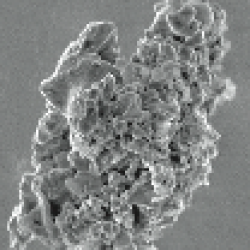Source Institutions
Source Institutions
Add to list Go to activity
Activity link broken? See if it's at the internet archive

In this activity, learners carry out a scientific investigation of dust in their classroom. Learners produce an analysis on graph paper of the dust they collect over the course of a few days. Then, learners extend their experience to examining the properties of dust in space and the Spitzer Space Telescope, which astronomers use to investigate interstellar dust.
- 5 to 10 minutes
- 1 to 7 days
- $1 - $5 per group of students
- Ages 11 - 18
- Activity, Experiment/Lab Activity, Lesson/Lesson Plan
- English
Quick Guide
Materials List (per group of students)
- Graph paper
- Magnifying glass (2x and 4x lenses)
- Tweezers
- Cleaning pad (e.g. Swiffer® or Grab-it® mitts) or paper towel
- Watercolor brushes
- Wide clear packing tape
- Clear metric ruler showing millimeter marks
- Photocopies of “About the Spitzer Space Telescope”
- Photocopies of “Resources” (An image of DR21 mentioned in the “Resources" page is located on the Spitzer Space Telescope web site.)
- Transparency of "Dust in Your Home and Dust in Space"
Subjects
-
Earth and Space Science
-
Astronomy
- Origins of Universe
- Stars and Galaxies
- Probes, Satellites and Spacecraft
-
Solar System
- Origin of Solar System
-
Astronomy
-
Mathematics
- Measurement
-
Engineering and Technology
-
Engineering
- Aerospace Engineering
- Technology
-
Engineering
-
Physical Sciences
-
Heat and Thermodynamics
- Heat and Temperature
- Structure and Properties of Matter
-
Heat and Thermodynamics
-
The Nature of Science
-
The Scientific Process
- Conducting Investigations
- Gathering Data
- Formulating Explanations
- Communicating Results
- Science as a Career
-
The Scientific Process
-
The Nature of Technology
-
Technology and Society
- Impacts of Technology
-
Technology and Society
Audience
To use this activity, learners need to:
- see
- read
- be mobile
- touch
Learning styles supported:
- Involves teamwork and communication skills
- Involves hands-on or lab activities
Other
Components that are part of this resource:
Includes alignment to state and/or national standards:
Includes assesments for student learning:
This resource is part of:
Access Rights:
- Free access
By:
- The University of Texas McDonald Observatory
Rights:
- All rights reserved, The University of Texas McDonald Observatory, 2004
